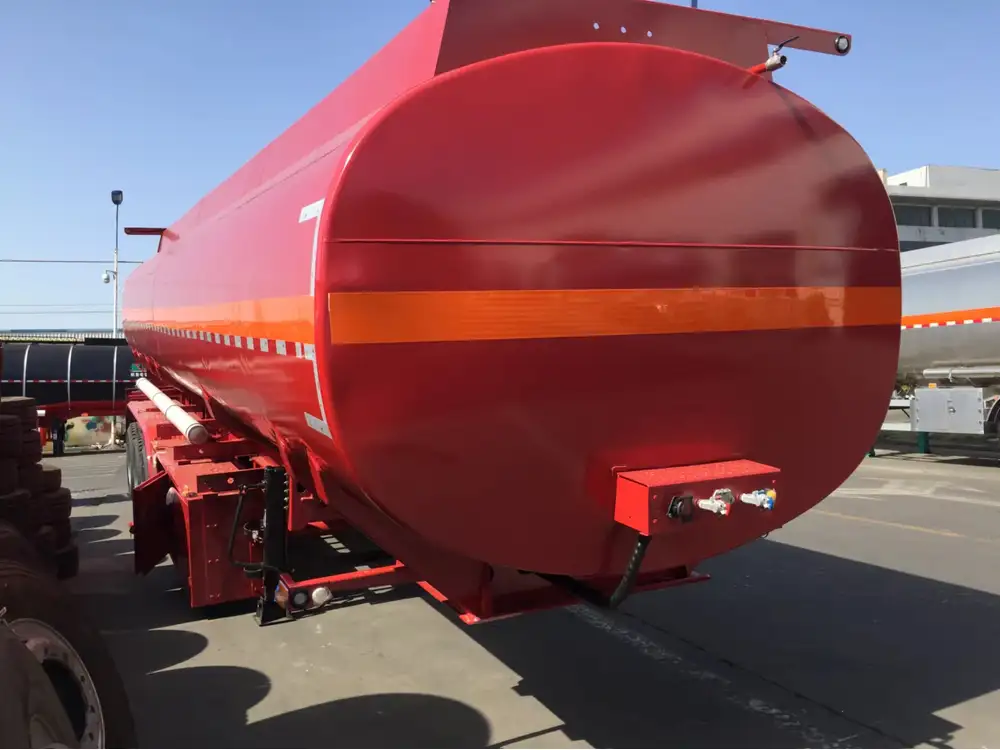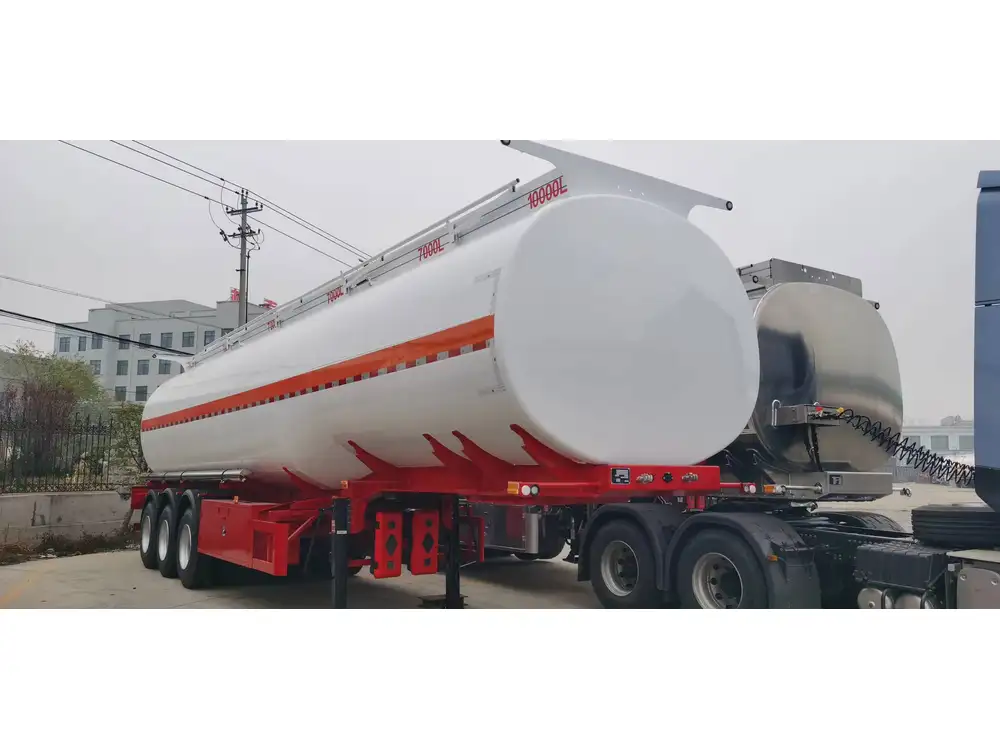When it comes to the efficient operation of a dump trailer, one of the critical factors that can significantly influence performance is the placement of the hydraulic cylinder. This placement directly affects the trailer’s lifting capability, stability, and operational efficiency. In this guide, we’ll dive deep into the parameters that dictate cylinder placement, providing clarity on best practices and offering valuable insights for manufacturers and users alike.
Understanding the Function of the Hydraulic Cylinder
The hydraulic cylinder is the heart of a dump trailer’s lifting mechanism. By converting hydraulic energy into mechanical energy, it allows the trailer bed to tilt and discharge its contents. Thus, optimal placement of this component is paramount.
The Components Involved
- Hydraulic Cylinder: Drives the lifting action.
- Articulating Frame: Allows for controlled movement.
- Dump Bed: The area that raises to unload material.
- Mounting Brackets: Facilitate secure attachment to the trailer frame.

Key Factors Influencing Cylinder Placement
Several elements must be analyzed to determine the best position for your hydraulic cylinder.
Load Distribution
The way weight is distributed affects the trailer’s balance during the lifting process. Key considerations include:
- Center of Gravity: Position the cylinder to maintain a low center of gravity, ensuring stability and promoting effective weight distribution.
- Payload Type: Different materials have distinct weights and distribution properties. For instance, gravel may behave differently compared to sand.
Trailer Design and Dimensions
The overall design of the dump trailer will influence how and where the cylinder is mounted. Considerations are as follows:
- Frame Design: The geometry and strength of the frame can affect cylinder placement; ensure that it is robust enough to handle the stresses during operation.
- Bed Length and Height: A taller dump bed may require a different cylinder placement than a shorter one.

Lifting Angle and Stroke Length
The lifting angle of the dump bed corresponds directly to the cylinder’s effectiveness.
- Optimal Lift Angle: Angling the bed correctly enables efficient unloading without requiring excessive hydraulic pressure. Typically, an angle between 45° to 50° is considered optimal.
- Stroke Length: A longer stroke can accommodate various load heights but be careful not to exceed the cylinder’s rated capacity.
Hydraulic System Specifications
The type and specifications of the hydraulic system used can limit or enhance cylinder placement options.
- Pressure Ratings: Ensure that your cylinder’s pressure ratings align with your operational needs.
- Pump Size and Type: A properly sized hydraulic pump can maximize efficiency and improve the responsiveness of the lift.
Recommended Cylinder Placement Techniques
Based on the preceding considerations, here are established practices for determining where to place the cylinder:

Centralized Positioning
In many instances, a centralized cylinder placement can significantly enhance the lift’s performance.
- Characteristics: It maintains balance, minimizes stress on the trailer’s frame, and is less prone to tipping.
- Applications: Ideal for standard dump trailers used in diversified jobs ranging from construction to landscaping.
Offset Positioning for Larger Loads
For trailers tasked with carrying heavier or bulkier loads, an offset placement may prove advantageous.
- Advantages: This method provides greater lift capacity and might reduce the mechanical stress experienced by the lift mechanism.
- Configuration: Position the cylinder closer to the pivot point but away from the center mass to counteract torque.
Dual Cylinder Systems
Utilizing a dual-cylinder system can elevate performance for larger trailers.
- Configuration Benefits: Improves lifting capacity, reducing the strain on individual cylinders and provides a more stable lift operation.
- Strategic Placement: Positioning them symmetrically on either side guarantees that the lift is even and minimizes the risk of bending or breaking.

Analyzing Real-World Applications
Examining practical applications can enhance understanding and ensure that the placement strategy aligns with terrain and usage requirements.
Construction Use Cases
In construction, dump trailers frequently carry very heavy materials like aggregates.
- Cylinder Position: Centralized, as the loads tend to remain balanced.
- Result: Provides reliable operation without compromising stability.
landscaping Applications
Landscaping tasks can include varied materials such as mulch and soil.
- Cylinder Requirements: Depending on the load, an offset position may be beneficial for handling bulkier materials.
- Evaluation: Analyze load types and adjust cylinder placement to maintain an optimal angle during unloading.

Maintenance Considerations
Proper maintenance of the hydraulic system and cylinder is crucial for longevity and operational efficacy.
Regular Inspections
- Visual Checks: Look for signs of wear or damage on the cylinder and hydraulic lines.
- Leak Tests: Identify any potential leaks, as they can undermine hydraulic pressure and reduce efficiency.
Hydraulic Fluid Levels
Monitoring fluid levels is crucial for efficient operation.
- Fluid Type: Use manufacturer-recommended hydraulic fluid to maintain system integrity.
- Regular Changes: Implement a routine for changing the hydraulic fluid based on usage intensity.

Comparing Cylinder Placement Strategies
A comparative analysis highlights the strengths and weaknesses of various cylinder placements.
| Placement Type | Advantages | Disadvantages |
|---|---|---|
| Centralized | Balanced lifting, easy to maintain | Limited capacity for heavier loads |
| Offset | Greater stability for large loads | Potential for uneven lifting if improperly aligned |
| Dual Cylinder | Enhanced capacity and stability | Increased complexity and maintenance |
Conclusion
In conclusion, the placement of the hydraulic cylinder on a dump trailer is a multifaceted aspect that demands careful consideration. From understanding the elements that influence cylinder positioning to recognizing the importance of maintaining the hydraulic system, each factor plays a crucial role in ensuring optimal trailer performance. By adhering to best practices and regularly assessing your trailer’s specific needs, you can maximize both efficiency and safety, paving the way for successful operations across various applications.
By thoroughly considering the factors discussed, you will not only enhance your knowledge of dump trailer operation but also enable informed decisions during manufacturing and operational tasks, ultimately improving overall performance and extending the lifespan of the equipment. Careful analysis and proactive approaches hold the key to navigating the complexities of hydraulic cylinder placement effectively.



